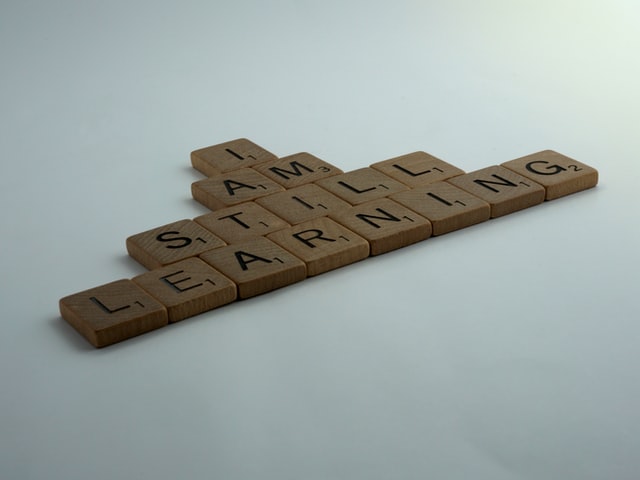I’m one for challenges, so today I’ve decided to take on one of the most frequent questions I’ve got from people preparing a lesson plan for their concorso:
How do I connect my lesson aims to the relevant frameworks?
A good question and one that is likely to be challenging if you’re only just starting out with lesson planning.
So, in this article, we will:
- Revise what lesson aims are
- Look at a sample British Council lesson plan for the B1 level
- Imagine that we’re doing this lesson in a 3rd year liceo and connect its lesson aims to the Indicazioni Nazionali, CEFR and European Key Competences
Before we start…
… a few points to bear in mind:
- If you need a template for your lesson plan and presentation, you can download ours for free:
- If you want to learn how to plan a lesson step by step, head over to our structured self-study bundle or our live webinars with recordings
- You may want to have a quick read of our article How to write a lesson plan: 6 key points

But how do I find my lesson aims?
This is another related question we have received. The short answer is that to find your aims, you should be answering the question: what will your students have learned at the end of the class?
Focus on the knowledge, skills and competences that your lesson will help them develop.
Lesson aims cannot be standardised or copied from another lesson plan: they need to be specific to your lesson. Your lesson activities (i.e. the actual procedures or exercises you will do) need to contribute to one or more of your lesson aims.
After you have identified your lesson aims, you can then pore through the relevant documents (especially the Indicazioni Nazionali, CEFR and European Key Competences) and see where your aims align with the aims outlined in the documents.
A sample lesson plan: Litter Poem
Take a few minutes to familiarise yourself with this sample lesson plan from the British Coucil. Here are the materials you need:
As you will see, the level of reference is B1 and up and the stated aims are:
• To consolidate and extend vocabulary related with litter pollution
• To develop understanding and responses to poetry
• To practice sentence stress patterns to read a poem aloud
• To practice writing skills and produce a poem
However, I personally think the lesson fulfils one additional aim:
• To raise students’ awareness of key issues related to litter and consider potential solutions

Connecting lesson aims to the relevant frameworks: Indicazioni Nazionali
Now that you have gone through the lesson aims, activities and worksheet for this lesson, let us hypothesise that we will use this lesson plan with a 3rd year class of liceo artistico.
The very first thing I would recommend doing is look at the relevant section in the Indicazioni Nazionali: open this document, go to page 15 and start reading the section “Lingua e cultura straniera”. We will be interested both in the linee generali e competenze and in the obiettivi specifici di apprendimento for the specific age group (which is secondo biennio in our case).
Now, here are some of the outcomes that are outlined in the document which our lesson plan contributes to reaching:
LINEE GENERALI E COMPETENZE
- durante il percorso liceale lo studente acquisisce capacità di comprensione di testi orali e scritti inerenti a tematiche di interesse sia personale sia scolastico (ambito letterario, artistico, musicale, scientifico, sociale, economico); di produzione di testi orali e scritti per riferire fatti, descrivere situazioni, argomentare e sostenere opinioni; di interazione nella lingua straniera in maniera adeguata sia agli interlocutori sia al contesto
OBIETTIVI SPECIFICI DI APPRENDIMENTO – LINGUA, SECONDO BIENNIO
- lo studente comprende in modo globale, selettivo e dettagliato testi orali/scritti attinenti ad aree di interesse di ciascun liceo;
- produce testi orali e scritti strutturati e coesi per riferire fatti, descrivere fenomeni e situazioni,
sostenere opinioni con le opportune argomentazioni; - partecipa a conversazioni e interagisce nella discussione, anche con parlanti nativi, in maniera adeguata sia agli interlocutori sia al contesto;
- riflette sul sistema (fonologia, morfologia, sintassi, lessico, ecc.) e sugli usi linguistici (funzioni, varietà di registri e testi, aspetti pragmatici, ecc.)
OBIETTIVI SPECIFICI DI APPRENDIMENTO – CULTURA, SECONDO BIENNIO
- comprende e contestualizza testi letterari di epoche diverse, con priorità per quei generi o per quelle tematiche che risultano motivanti per lo studente;
Connecting lesson aims to the relevant frameworks: European Key Competences
Now that we’ve looked at the Indicazioni Nazionali, let’s move onto the European Key Competences.
As you know, there are 8 European Key Competences:
- Multilingual competence
- Personal, social and learning to learn competence
- Citizenship competence
- Entrepreneurship competence
- Cultural awareness and expression competence
- Digital competence
- Mathematical competence and competence in science, technology and engineering
- Literacy competence
Each of them is explained in terms of knowledge, skills and attitudes.
Now the question is: which one(s) does your lesson plan contribute to developing? Go over the lesson plan and the lesson aims and read the document to find the relevant references.
Here are some potential references I found:
MULTILINGUAL COMPETENCE
- Knowledge: This competence requires knowledge of vocabulary and functional grammar of different languages
- Skills: Essential skills for this competence consist of the ability to understand spoken messages, to initiate, sustain and conclude conversations and to read, understand and draft texts
PERSONAL, SOCIAL AND LEARNING TO LEARN COMPETENCE
- Knowledge: Personal, social and learning to learn competence requires [..] knowledge of the components of a healthy mind, body and lifestyle –> connection to the topic of litter and possible solutions
CITIZENSHIP COMPETENCE
- Skills: Skills for citizenship competence relate to the ability to engage effectively with others in common or public interest, including the sustainable development of society. This involves critical thinking and integrated problem solving skills

Connecting lesson aims to the relevant frameworks: the CEFR
Finally, how does this lesson plan contribute to the aims outlined in the CEFR? We know that we are dealing with a B1 level, so we will be looking at that level and the B1+ level (though of course you may want to look at higher or lower levels depending on your specific students).
Look at the CEFR document (latest version, don’t look at the 2001 version): start from the index and identify the scales that could be related to what we are trying to achieve with this lesson plan. For example, this lesson doesn’t explicitly deal with grammar, so the related scales are something you may want to just not consider this time.
Here are some scales and descriptors that could potentially be relevant to the lesson plan at hand. Note: these are just examples – the CEFR is a huge document and you may find other scales that you believe are relevant to this lesson plan.
- Reading as a leisure activity – B1+: Can understand simple poems and song lyrics provided these employ straightforward language and style
- Identifying cues and inferring – B1+: Can extrapolate the meaning of occasional unknown words/signs from the context and deduce sentence meaning, provided the topic discussed is familiar.
- Overall oral production + B1: Can reasonably fluently sustain a straightforward description of one of a variety of subjects within their field of interest, presenting it as a linear sequence of points.
- Overall written production – B1: Can produce straightforward connected texts on a range of familiar subjects within their field of interest, by linking a series of shorter discrete elements into a linear sequence.
- Vocabulary range – B1: Has a good range of vocabulary related to familiar topics and everyday situations.
- Phonological control, prosodic features – B1: Can convey their message in an intelligible way in spite of a strong influence on stress, intonation and/or rhythm from the other language(s) they speak.
Now it’s your turn to try!
I hope this article was useful to understand better how to link a lesson and its aims to the Indicazioni Nazionali, CEFR and European Key Competences.
Now it’s your turn to link your lesson aims to the relevant frameworks: to do this with a structured guide and plenty of examples, try our self-study courses for free:

